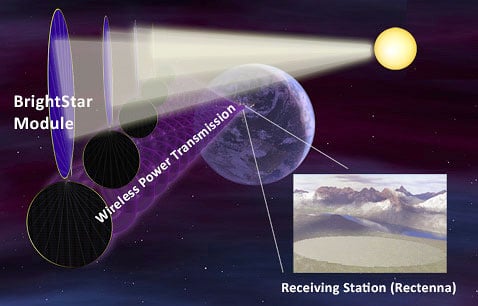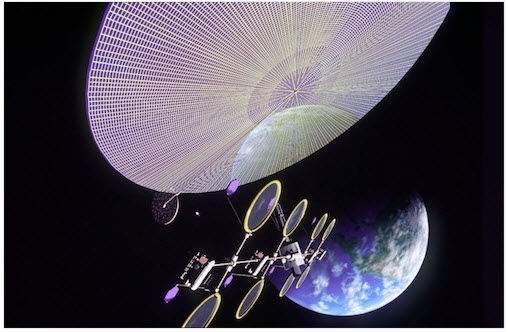
Are you familiar with the concept of solar power collection – in orbit? It’s something that we’ve been working on for a while, some contracts have been signed, things are being studied, blah blah blah. Basically – and I mean basically – the premise is that we collect solar power in satellites that are orbiting the earth. The satellites then convert a large portion of this newly collected energy into a laser, which then shoots down through the atmosphere to some kind of device on Earth that then converts all of that laser beam into clean, useful energy from which everyone can benefit.
What’s the matter? Is that a little too Battlestar Galactica for you? Come on, I know you watch Battlestar Galactica.
Well, there are two major hurdles to this technology, and as you can imagine, the race to become the first company to put satellites into space to beam solar energy back to Earth. The first hurdle is getting several (maybe 300) little satellites to beam their energy to one large satellite, which in turn would beam its energy back to Earth. The other hurdle, as you might have guessed, is how do we get all of this gear into space? Lest we not forget also – how do we maintain it? We employ armies of utility workers to keep up with our antiquated power grid at the present – when this system is designed, careful attention needs to be paid to maintenance and how it will be maintained.

Wait, wait, wait – am I really talking about this like it’s going to happen? This seems pretty Michael Crichton There’s a power company called PG&E in California (remember when the Enron guys spent all of their retirement?) that has signed a deal with a company called Solaren for 200 megwatts of solar space-based power by 2016. Someone thinks that this is going to happen – otherwise they wouldn’t be shelling out money to research it. Right?
PowerSat, a company working on this technology, says that the technology will be usable within a decade – the Japanese Aerospace Exploration Agency and Osaka University are working on the receiver device presently. The device is made from a combination of metal powders and plates that multiply the energy of the laser being shot at it by a factor of 4. As the program progresses, one would hope that the factor could be increased.
On one hand, wow. That’s some inventive thinking! On the other, this would be some pretty great technology if it gets perfected. PowerSat posted a video about the technology and their approach:
Thanks to The Daily Galaxy, CleanTechnica, and Yale 360!




